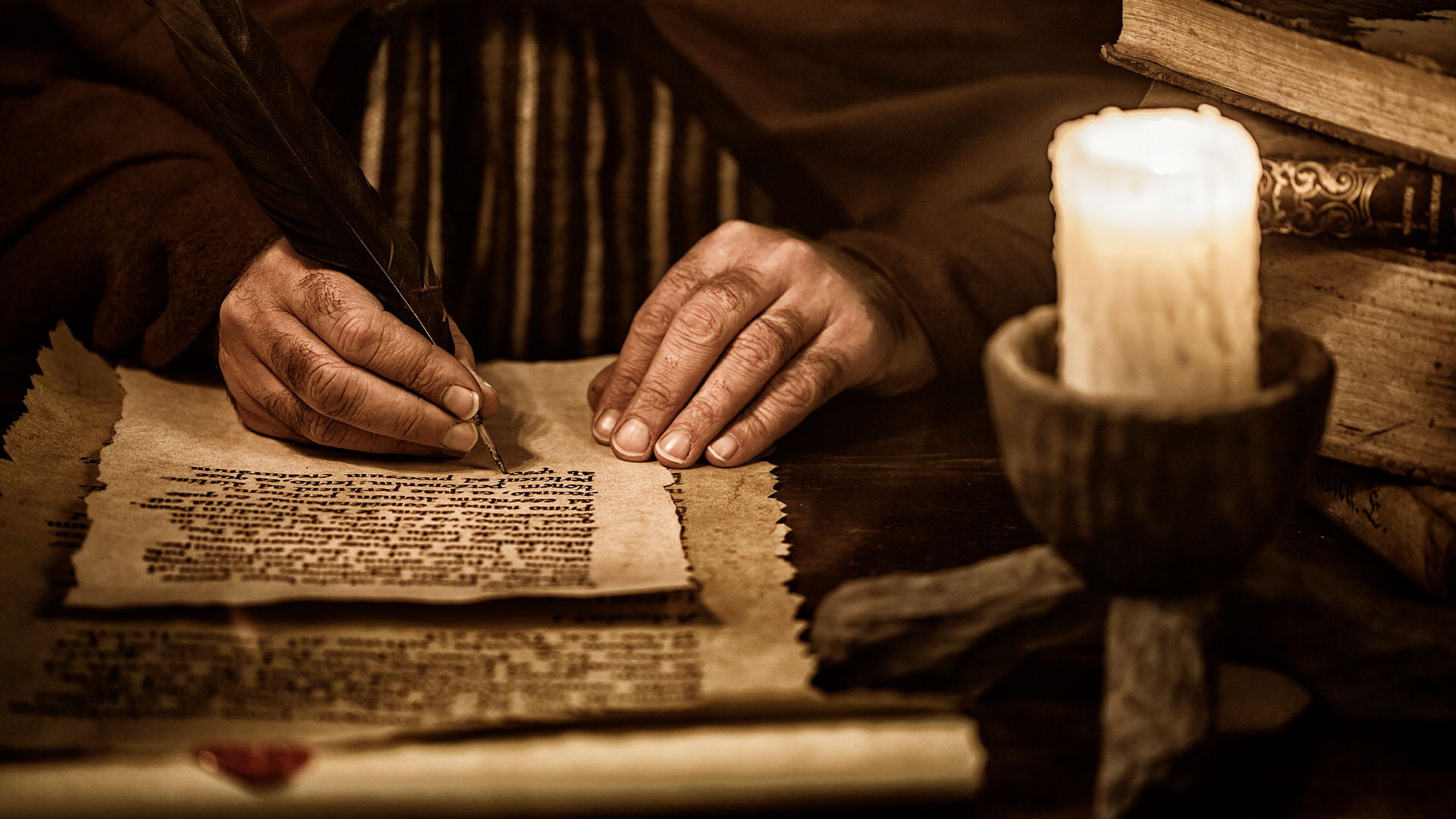World's oldest known decimal point discovered in merchant's notes from 1440s Italy
Decimal points are at least 150 years older than historians thought, according to newly unearthed notes from Venetian merchant Giovanni Bianchini, who practiced astrology in the 1440s.

The decimal point is 150 years older than historians thought it was, newfound notes from 15th-century Italy reveal.
Decimal points are so simple, it seems like they should have existed forever. These handy mathematical tools break up whole numbers into tenths, hundredths and thousandths, making computation much simpler than with fractions. And some versions of decimals have been around since the 900s (in Damascus) or the 1200s (in China).
But a consistent system of decimals wasn't fully cemented until 1593, when German mathematician Christopher Clavius used decimals in an astronomical treatise. Now, new research suggests Clavius was playing with an older tradition, picking up the use of decimals from a 15th-century Venetian merchant named Giovanni Bianchini.
Related: The World's Most Beautiful Equations
Bianchini's work dates to between 1441 and 1450, making the decimal point a century and a half older than Clavius' use of it, according to the authors of the new research.
While teaching a math camp for middle schoolers, Glen Van Brummelen, a historian of mathematics at Trinity Western University in Canada, noticed the use of the decimal in one of Bianchini's treatises.
"I remember running up and down the hallways of the dorm with my computer trying to find anybody who was awake, shouting 'look at this, this guy is doing decimal points in the 1440s!'" Van Brummelen told Nature News.
Sign up for the Live Science daily newsletter now
Get the world’s most fascinating discoveries delivered straight to your inbox.
The idea of breaking up whole numbers into pieces is very old, but most mathematicians prior to the Middle Ages used fractions. Astronomers did use decimals, but not in the familiar base-10 system that elementary schoolers learn today. Instead, they used base-60 decimals, created by dividing 360-degree circles into 60 minutes, which could then be subdivided into 60 seconds.
Occasionally, mathematicians did use notations that are reminiscent of today's decimal system, Van Brummelen wrote in a paper published online for the journal Historia Mathematica. But these ideas tended to fizzle instead of getting passed down from mathematician to mathematician.
"Thus, attempting to identify a 'first' among this host of different players may be a fool's errand, depending on one's criteria for the historical actor's level of appreciation of the power of operations with decimal fractions and the persistence of their systems," Van Brummelen wrote.
However, it's easier to pin down the history of the decimal point — a symbol that persists to this day, he wrote. And that notation first appears in Bianchini's "Tabulae primi mobilis B," a text on the calculation of stellar coordinates. Bianchini was a merchant who became an administrator to the ruling family of Venice at the time, the d'Estes. As part of this job, he was responsible for calculating horoscopes and astrology. In some of the tables in his text, he uses the decimal point just as mathematicians do today.
Though the notation was slow to catch on, Clavius would have known about Bianchini, José Chabás, a historian of astronomy at the Pompeu Fabra University in Barcelona, Spain, told Nature News. And writers inspired by Clavius picked up the decimal point and ran with it. Finally, Scottish mathematician John Napier, the inventor of logarithms, cemented the decimal point in mathematics in the early 1600s.

Stephanie Pappas is a contributing writer for Live Science, covering topics ranging from geoscience to archaeology to the human brain and behavior. She was previously a senior writer for Live Science but is now a freelancer based in Denver, Colorado, and regularly contributes to Scientific American and The Monitor, the monthly magazine of the American Psychological Association. Stephanie received a bachelor's degree in psychology from the University of South Carolina and a graduate certificate in science communication from the University of California, Santa Cruz.









